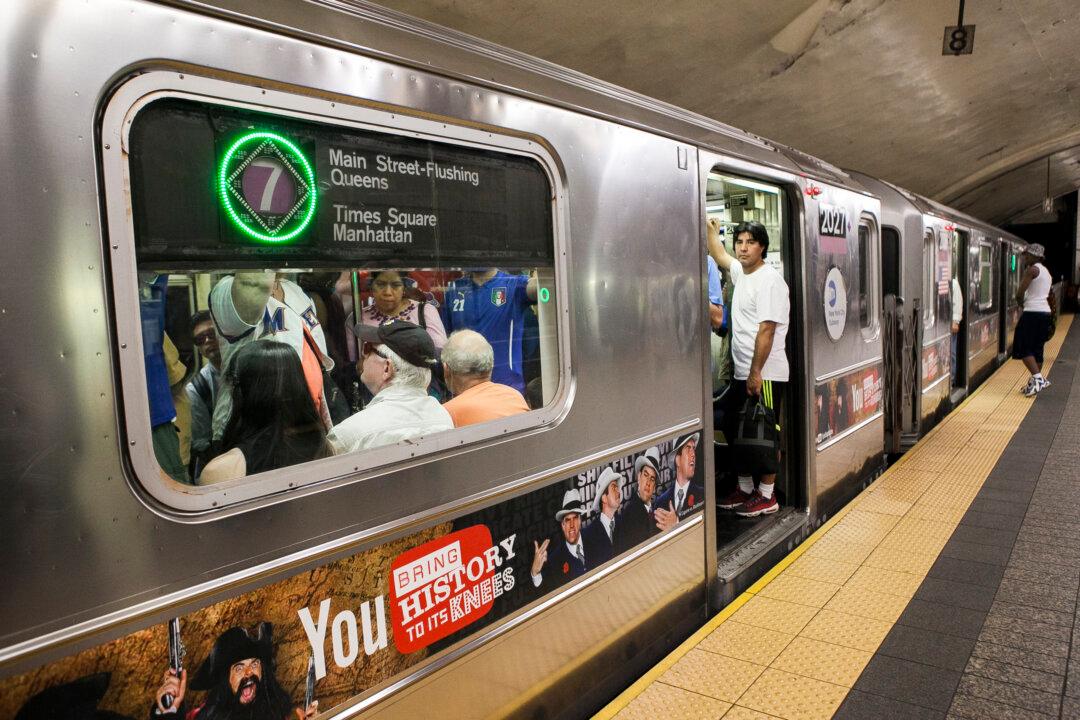NEW YORK—The subway car came to a halt but it was unlike any halt that Amy Strano had experienced. The train jolted. The lights shut off. A dim emergency light buzzed on. Then, Strano smelled smoke.
“It smelled like burning rubber,” said Strano, a products and services director for a New York nonprofit.
There was no announcement. The passengers on the No. 7 train glanced nervously at one another on the morning of April 6.
“My first instinct was that there was a fire and that I should move,” said 22-year-old Jacquelyn Trimlett.
A few passengers crossed over to other subway cars. But the riders did not know from which direction, or what, the smoke was seeping from.
Silence ensued. Still, no announcement came.
The tension that Strano felt inside the broken train reminded her of Sept. 11. “I was around for 9/11,” she said. “I know the terrible things that can happen in this city.”
Finally, the train conductor announced that the Metropolitan Transportation Authority (MTA) was looking into the issue. The emergency breaks had self-activated and he was not sure why. Do not open the windows, Strano remembered him saying.
A passenger, who had opened a window minutes earlier, hurried to slam it shut.
A woman in a red sweater began to pray.





